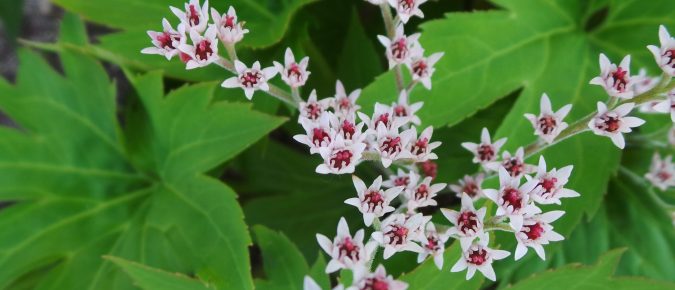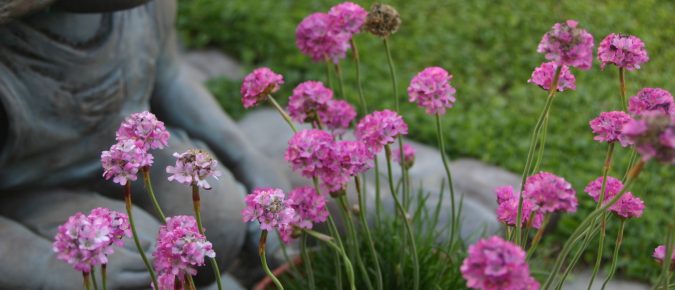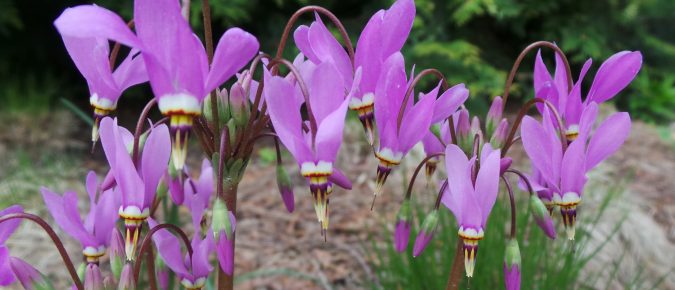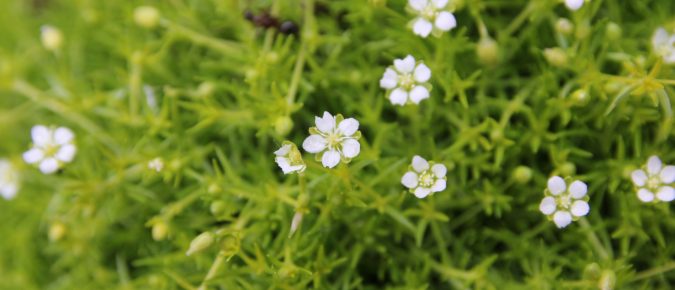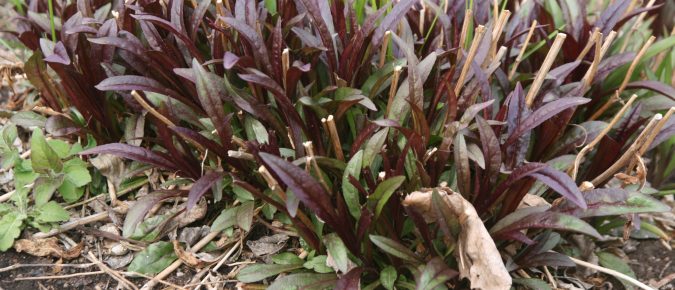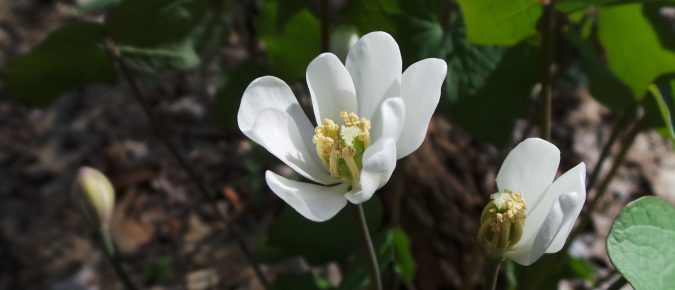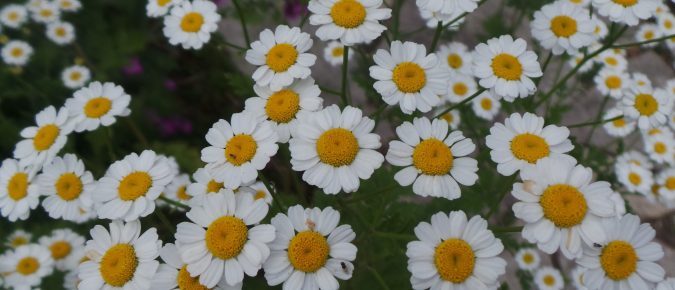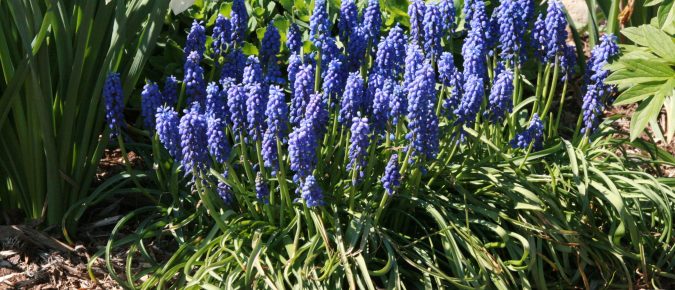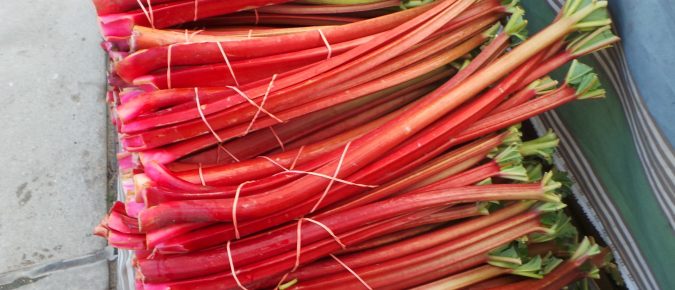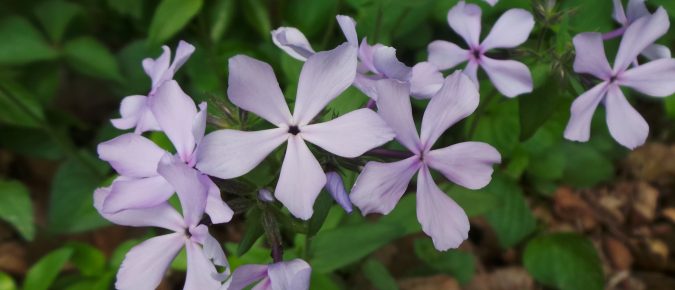Grown for its showy foliage and airy flowers, mukdenia is an uncommon herbaceous perennial for the shade garden. The glossy green, fan-shaped leaves are attractive throughout summer, but when they transform to bright red starting at the tips they become a stunning statement in the garden. Learn more about this introduced ornamental plant in this article…
Sea thrift is a profuse spring and early summer bloomer, with pink or white flowers on low mounds of dense foliage. Coming from mountainous and coastal areas, it needs excellent drainage and lean soils to thrive so can be a challenge to grow in wet Midwestern climates. Learn more about this clump-forming evergreen perennial in this article…
With delicate, nodding purple, pink or white flowers that resemble tiny “shooting stars”, Dodecatheon meadia is a charming spring wildflower of moist prairies and open woodlands that adapts well to home gardens. Learn more about this perennial native to the central and eastern US in this article…
For a burst of late-season color, heleniums offer something different than most other daisy-type flowers with short petals in warm, fall colors and a high, architectural center. A few of these robust perennials bloom as early as June, but most wait until August or September when the rest of the garden is waning. Learn more about the garden hybrids developed from these North American natives in this article…
With a lush, velvety appearance, Irish or Scotch moss forms a luxurious carpet of green or gold, respectively. Not a true moss but a flowering plant, these evergreen ground cover plants resemble moss until their small white star-shaped flowers begin to bloom. Learn more about these plants that make a great filler between flagstones or spilling over rocks…
With showy panicles of tubular white flowers and deep maroon foliage, ‘Husker Red’ foxglove beardtongue is a star in the garden in late spring into early summer. One of few Penstemon species to thrive in humid climates, P. digitalis is a nice addition to rain gardens, perennial borders and natural areas. Learn more about this selection of this eastern North American native in this article…
With short-lived pure white flowers and curious-looking seedpods, this early spring bloomer named after a US President makes a great addition to native plantings or as a shady groundcover. Its common name of twinleaf comes from the interesting butterfly-shaped leaves. Learn more about Jeffersonia diphylla in this article…
With attractive ferny foliage and eye-catching blooms, chamomile can be a nice addition to the ornamental garden or herb garden. This Eurasian annual is easily grown from seed for its yellow and white daisy flowers that are harvested to make chamomile tea. Learn more about Matricaria chamomilla in this article…
For a hit of intense blue in the garden in mid-spring, Muscari armeniacum can’t be beat. This small perennial bulb produces clusters of bell-shaped flowers that resemble bunches of grapes, giving rise to the common name grape hyacinth. Learn more about this European species in this article…
Rhubarb is an old-fashioned perennial is very easy to grow and is an early season harvest from the garden. Rhubarb can also be used as an edible landscape plant. This article provides some history and how to grow rhubarb in gardens and landscapes.
Lenten Rose is pushing up its flower spikes and deeply divided, leathery, umbrella-like leaves in early spring with tulips and daffodils. The long-lasting sepals in an open, bell shape offer ornamental interest long after the seeds have developed. Learn more about this herbaceous perennial in this article.
For soft blue flowers in partly shady spots in spring, nothing beats woodland phlox. This North American native thrives in dappled shade and moist, well-drained soils. With an open, relaxed habit it fits well in informal shady beds, rock gardens and wild or naturalized areas. Learn more about this pretty late spring to early summer bloomer in this article…

